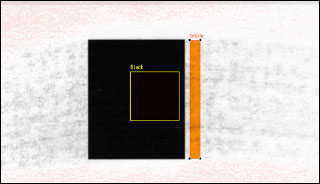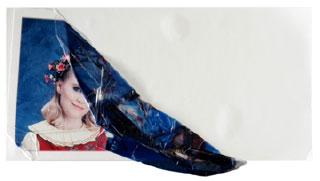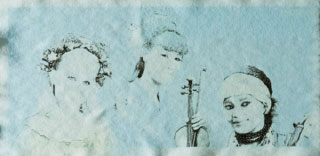New DP3 Project Publications
This past January, the Society for Imaging Science and Technology published IPI’s paper The Determination of the Minimum Force to Initiate Abrasion Damage of Digital Press Prints in their proceedings for the 4th International Symposium on Technologies for Digital Photo Fulfillment
The purpose of the project, funded by the Andrew W. Mellon Foundation, was to determine the minimum levels of force and number of abrasion cycles necessary to produce a just noticeable difference (JND) in objects printed with modern digital presses. The results of this work are intended to help cultural heritage institutions that collect these materials develop the right policies for use and care to prevent damage to their collections.
A variety of digital press technologies and papers were studied and compared to offset lithography. Specimens were abraded using the Sutherland 2000 Rub Tester with both ¼-lb and 2-lb loads. The lighter weight was an attempt to replicate physical handling of materials such as turning pages in books or sorting sheets in stacks of documents. The use of the heavier weight was an attempt to simulate unbound prints being pulled from larger stacks as well as in stacks during transport. The abrading surfaces included unprinted and printed sheets to replicate single-sided prints in stacks or double-sided prints in stacks or books. A series of abrasion cycles (from 5 to 1000) were produced for each of the materials to determine when the JND could be observed.

Abrasion test target showing areas of measurement for density loss and colorant smear
Results from the lighter weight indicated that page turning or sorting of sheets in small stacks should not be a problem no matter which printing technology or paper is used as no noticeable damage was observed even after 1000 abrasion cycles. The heavier weight did show some variation between the different printer technology/paper combinations indicating that a greater concern will be needed for objects that may be inadvertently subjected to higher forces, especially inkjet digital press.
The full article is available on the DP3 Project website.
Click here to download the PDF.
Also in January 2013, the Journal of the American Institute for Conservation published IPI’s article Resistance of Digitally and Traditionally Printed Materials to Bleed, Delamination, Gloss Change, and Planar Distortion during Flood.
It is imperative that cultural heritage institutions with digitally printed materials in their collections understand the sensitivities of these objects to water exposure during flood. Anecdotal evidence from institutions and the general public suggest that some digital print processes are extremely sensitive to water exposure. Understanding this vulnerability will be critical for institutions modernizing their disaster response plans to include digital prints as inappropriate emergency responses could lead to loss of materials due to their inherent sensitivity to water or due to contamination of adjacent collection materials through bleeding of the image-forming colorants. A variety of digital print types were immersed in water for 24 hours and then evaluated by measuring changes in color and gloss, and visually inspecting for text readability, delamination, and/or planar distortion. As expected, most prints experienced at least slight planar distortion; some, however, suffered extreme forms of damage including colorant bleed or complete delamination or dissolution of the image/text layer. Because the digital prints were often more sensitive than traditional prints to flood damage, new disaster response strategies should be developed for collections that contain these materials.
The article is available through JAIC.

Delaminated dye sublimation print

Dye bleed in inkjet print
|